

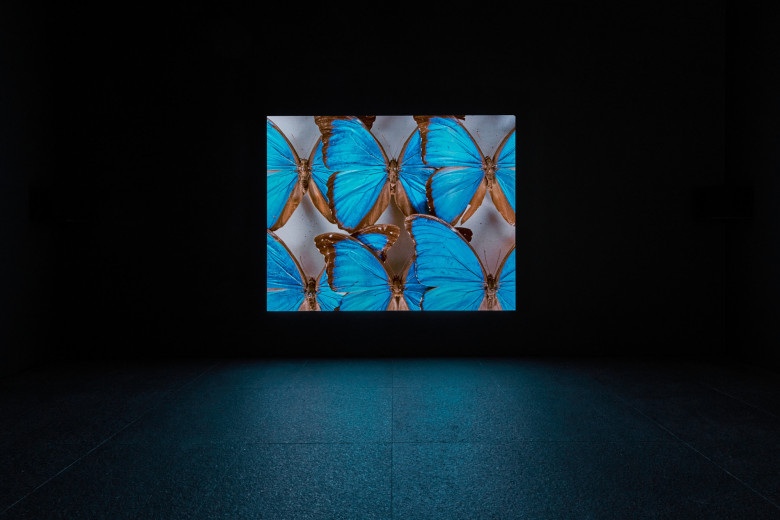
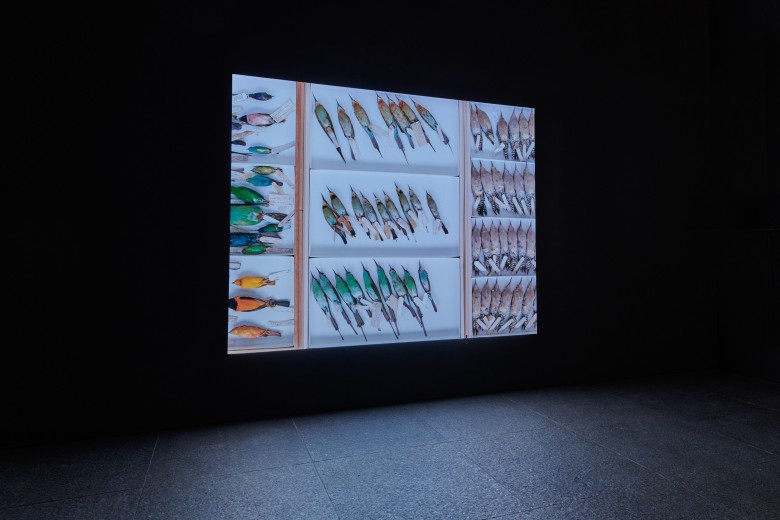

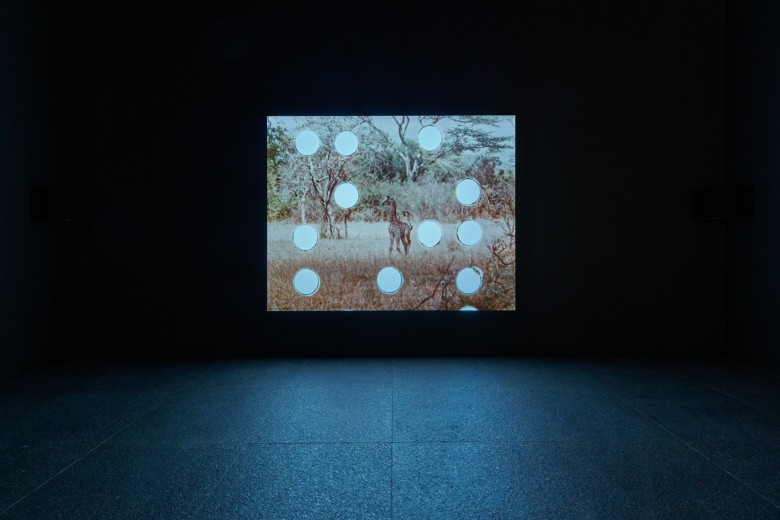
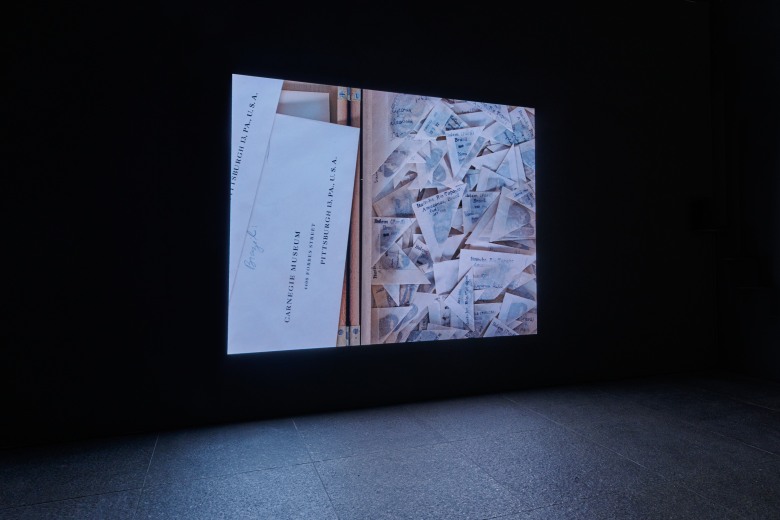


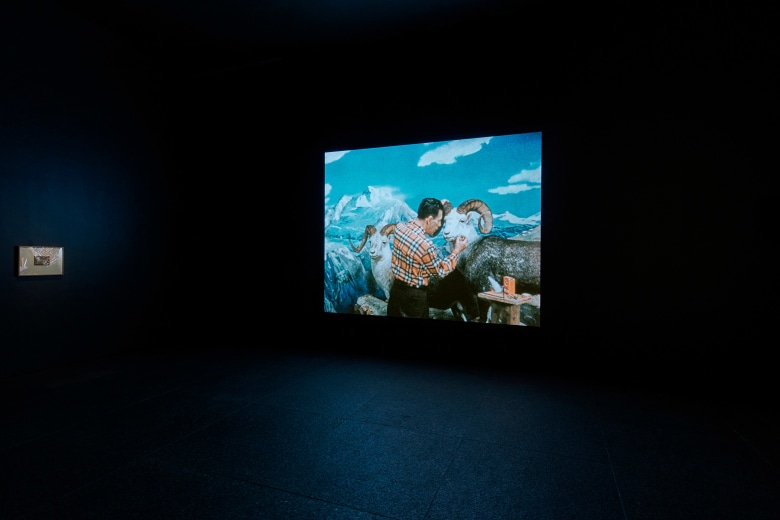
Panorama traces the complex processes of how cultural materials—once living—enter a museum collection and begin their afterlife as objects of display. The artist brings to light a trove of dormant 16mm film reels she found in the Carnegie Museum of Natural History’s storage documenting the museum’s scientific expeditions from the 1930s to 1970s. In her film Panorama, Siegel re-edits and re-deploys these scenes of specimen field collection and the creation of the museum’s dioramas, along with her own contemporary filmed scenes, revealing in turn the hidden narratives of museum expedition and display by reconstructing and connecting multiple decades and geographies of collection.
Across the numerous ecologies charted in Siegel’s film, scientists perform acts of extraction, bringing their own Western perspectives and collection practices to bear upon places around the world—as well as the local, indigenous guides and workers assisting them—as much as they take specimens with them. The scientists shoot guns and wield nets, in tandem with cameras, to ground birds, trap butterflies, and fell large mammals. Panorama reveals scenes of the collected specimens examined, recorded, and readied for transport—skinned, stuffed, sewn, and, ultimately, prepared for a life of display.
In the film’s finale, the museum’s present day encased glass dioramas thus become cinematic windows into not only the habitats on view, but the minds of the scientists and technicians who created them. The animals, in their afterlife, look back at the visitors (and the viewers of Siegel’s film). Their glass-eyed gaze now conveys a multitude of ideas, ideologies, and aesthetics evident in a museum of natural history; Siegel has made visible their journey to the museum by connecting their former lives as roving and flying creatures with their now emphatic, unceasing stillness. Whether they are in suspension as part of a dramatic diorama or placed side by side in storage drawers, the specimens portrayed by Siegel hold multivalent narratives of other places, times, and the cultural subjectivities of their collectors. By tracing this process in all its complexity, the artist offers a view of the museum as a place of overlapping temporalities and contexts where cultural meaning and value shift and accrue.
- Liz Park
